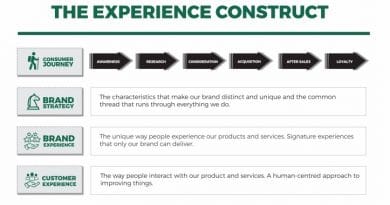How to Avoid the Small Business Growth ‘Death Spiral’
Opinions expressed by Entrepreneur contributors are their own.
For small businesses and young enterprises, size represents both challenge and opportunity: while it’s difficult to get a foothold in the market, relatively new players also have the agility to scale up quickly. Not only that, but they usually don’t face the burden of modernizing legacy systems.
But what happens when that growth plateaus and there are no obvious suspects?
I have seen the fear among small business owners that stagnation may cause revenue to fall off a cliff. With small businesses employing 61.7 million Americans (or 46.4% of private sector employees), having the resilience to withstand fluctuating market conditions is a matter for the economy as a whole. We may not be in an official recession, but consumer sentiment matters. People are feeling the pinch and being careful with their discretionary income.
Locally based small businesses with fewer than ten employees and income under $1 million are especially constrained by local consumer incomes — and the perception of an economic downturn. As CMO of an enterprise that helps businesses of this size in the beauty and wellness space, we know it is possible to scale sustainably even in uncertain times. Here’s what to consider when your growth flatlines.
Related: What to Do When You’re Why Your Company’s Growth Stalled
Get your services mix right
We really need to get the obvious out of the way first. If a hot dog shop is selling smoothies — and the smoothies aren’t selling — the owner is better off focusing on expanding their hot dog offerings. You might be surprised at how often solopreneurs and small businesses persist with a product or service that isn’t selling out of a misplaced loyalty to an original vision or an attempt to get a return on their investment.
As I tell people, the beauty of being small is being nimble enough to more easily adjust according to demand, trends and seasonal variations. Here’s where data is your friend. Use your reporting tools to analyze which of your current services generate the most revenue and consider removing the underperforming ones. If possible, benchmark your service mix against the market leaders by:
- Analyzing successful businesses: Study the service offerings of similar-sized competitors in your local area or niche. What range of services do they provide? How do they balance core services with specialty treatments?
- Doing your social research: Use social media and review sites like Instagram, Yelp or Google Reviews to gauge trending services.
- Talk to your customers. Learn their pain points, gauge the services they value the most and identify what’s missing.
I recommend “auditing” your service mix at least quarterly. In my experience, successful small businesses in our industry often find that elusive sweet spot — an ongoing balance between diversification and staying within their core competencies.
Related: Build Long-Term Customer Loyalty With These 3 Strategies
Drive customer loyalty
One of the big lessons from the pandemic was the danger of postponing needed changes to operating models and implementing digital modernization. Small and medium-sized businesses were caught off guard, unable to pivot and diversify income sources to survive and thrive.
This digital shift has fundamentally changed how businesses interact with customers. Sales teams now operate with a much greater emphasis on digital capacity and influence. These relationships become so important when growth stagnates, people are limiting their expenditure and repeat customers are driving recurring revenue, so consider:
- Service packages: Bundle complementary services together. For instance, offer a package that includes a series of services over several months.
- A loyalty program: Offering perks like priority bookings, discounts or exclusive access to new services encourages repeat visits.
- Building a social media following: Give customers a front-row seat to what you are offering, along with personal stories and behind-the-scenes content, to foster a sense of community.
- Subscription-based services: A monthly membership model allows clients to pay a set fee for a certain number of services or products.
Remember, marketing is responsible for the entire customer lifecycle, not just acquisition. Research and understand customer needs from initial contact through to retention and loyalty. That means gathering feedback at every touchpoint—including cancellations. Then, prioritize features and improvements based on customer feedback to personalize the whole journey.
Related: Customer Loyalty Is Your Holy Grail for Success. Here’s Why.
Adoption of technology
When wage growth does not keep up with inflation, “pay later” installment options come into their own. According to Adobe Analytics, the use of this form of zero-interest loan grew 16% to $67 billion last year through November. While we have seen a big increase in the number of retailers seeking the “pay later” facility, the ideal is to have it already embedded into your digital platform.
McKinsey cited limited managerial, technological and financial skills as major constraints limiting growth of local small businesses. One variation of the so-called “founder’s trap” is a Catch-22 where a business can outgrow their skill set but are unwilling to bring on new people until sustainable growth is demonstrated. AI and automation are filling in the gap.
Just as we encourage beauty and wellness providers to become a one-stop shop for consumers’ needs, centralizing functions on a single platform — appointment scheduling, inventory management, customer relationship management and payment processing — eliminates the need to be a master of multiple systems. In an unstable economic environment, tech adoption can help small businesses not just scale up and down quickly but use analytics to understand exactly where the customer is heading next — and meet them there.
Related: 3 Strategies for Lasting Customer Loyalty and Growth
Building relationships
We are in a fortunate position in the wellness business because people are still willing to give themselves those “small luxuries” even when money is tight. But no matter the industry, building resiliency into your business has become imperative as global shocks have become the norm, not the exception. One of the keys to avoiding periods of stagnating growth is meeting the consumer preference for more authentic interactions via the blending of brick-and-mortar and online presence. Like in any good relationship, when people know you are for real, they are more likely to stick around through the good times and the bad.



